Our Interviews
We film our interviews with broadcast-quality, high-definition cameras. But that’s just the start; It takes a team to convert the interviews into multiple formats so they are easily accessible by researchers and the public. Our goal is to post as much of the transcribed interview as possible online, making it useful to a worldwide audience.
FAQs
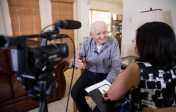
I have a request to have someone interviewed
We would love to accommodate everyone. But our funding and time is limited.
There are a few possibilities.
- You conduct the interview yourself. We provide the paperwork and training. You find the equipment and/or a videographer.
- Your loved one comes to Austin. We schedule an interview in our studios. You may still conduct the interview.
- You provide funding to hire a professional videographer in your area and we find a videographer for you. You conduct the interview.
Note: On rare occasions, we accept funding for our staff to travel for an interview. This is generally the most expensive way to go.
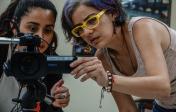
What happens after you conduct an interview?
- We first convert the videos into an editable video format.
- We send those files to the library for digitization and preservation in a format that will be accessible for many, many years, long after DVDs and mp4s are not being used.
- We create an online version (mp4) for our website and send a DVD or mp4 to the interview subject.
- We also may create short documentaries, audio stories or photo stories based on the interview, archival photos, and documents.
See our collections
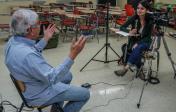
What is a MIIS?
The Voces Oral History Center conducts dozens of interviews every year. Some take place in a studio within the Moody College of Communication, others are in an individual's home or office. But the majority derive from Multiple Individual Interview Sessions (MIISes).
The MIISes are generally outside of Austin and are major productions, involving as many as 20 University of Texas faculty, students, and volunteers. At the end of the day, a MIIS may have recorded as many as 14 interviews: seven in a morning session and seven in the afternoon.
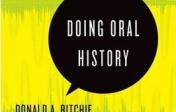
I want to start my own oral history project.
Fantastic!
We always recommend that people curious about starting their own projects read Donald Ritchie, "Doing Oral History."
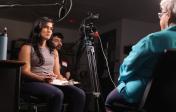
Photo & Video Request Form
Simply submit a request through our user-friendly form, and for a small processing fee, gain access to high resolution images and video. If you are a family member, we can provide you a copy at no cost. If any question please email voces@utexas.edu.
Preparing for your interview
What to bring
If you have any photographs, documents, awards, or other items of significance we request that you bring them with you. We'll scan them on site and return them to you.
What to wear
Please don't wear prints or the colors - Black, White or Red. Military or work-related uniforms are encouraged, but being comfortable is most important. Please note you will be on camera and have a portrait taken.
Food & drink
At our MIISes we often provide water, coffee, tea, and assorted snacks. However, since you will be spending a large portion of the morning or afternoon with us, we suggest bringing any other foods you may need and eating them before or after your interview.

